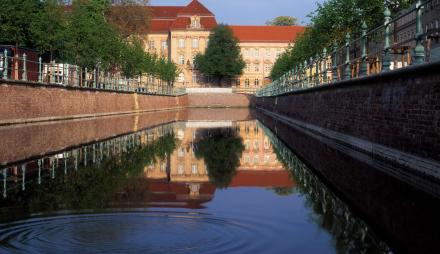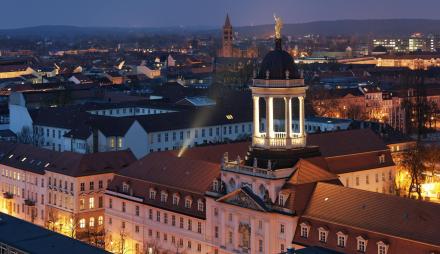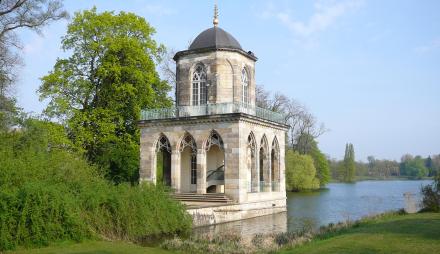The church, with its freestanding campanile in an Italianate architectural style, was built in 1842/43 at the request of King Frederick William IV based on designs by Friedrich Ludwig Persius. Friedrich August Stüler was tasked with further design and execution. The simple hall building is crowned at the corners with turret-like ciboria featuring apostle statuettes. Along Ribbeckstraße, an arcade hall is placed east of the church, with a tower rising at its northern end. Two small medieval bells ring from the tower. In place of the east apse, Reinhold Persius added a rectangular chancel building in 1882. Behind the village church lies the most famous cemetery in Potsdam.
The organ front dates from 1856, with the colorful ornamental painting of the pipes added in 1882. The organ, consisting of twelve registers, was built by Schuke in 1978. Iron cast reliefs from the first third of the 19th century and three baroque epitaphs can be seen, including that of the scholar and court jester of the Soldier King, Jakob Paul von Gundling, who is said to have been buried in a wine barrel.
Services take place every Sunday at 9:30 AM. The parish also has a children’s choir and an adult choir, with enthusiastic singers of both women and men.
Links
Address
Dorfkirche Bornstedt
Ribbeckstraße 41
14469 Potsdam
Germany





